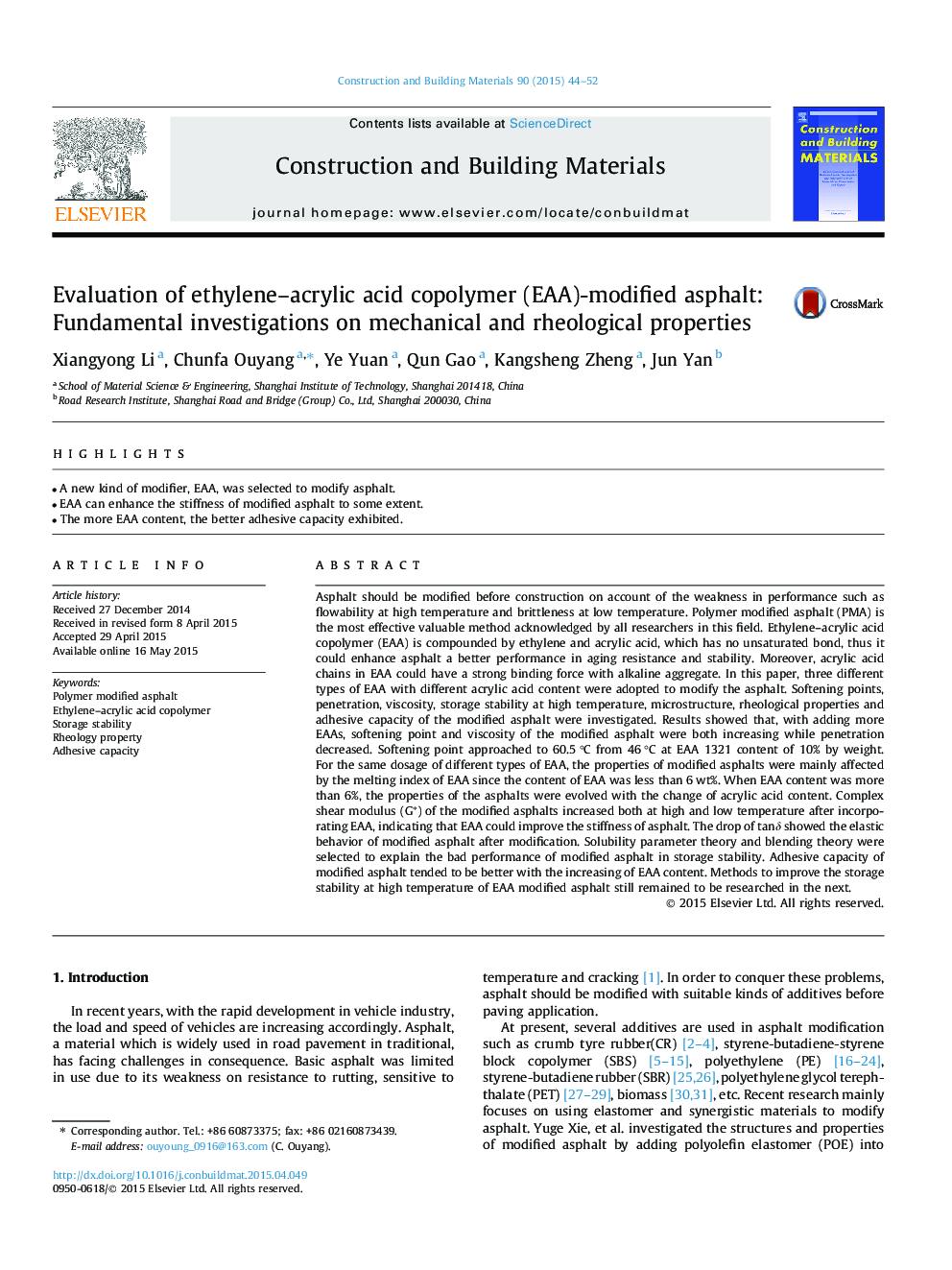| کد مقاله | کد نشریه | سال انتشار | مقاله انگلیسی | نسخه تمام متن |
|---|---|---|---|---|
| 256850 | 503563 | 2015 | 9 صفحه PDF | دانلود رایگان |

• A new kind of modifier, EAA, was selected to modify asphalt.
• EAA can enhance the stiffness of modified asphalt to some extent.
• The more EAA content, the better adhesive capacity exhibited.
Asphalt should be modified before construction on account of the weakness in performance such as flowability at high temperature and brittleness at low temperature. Polymer modified asphalt (PMA) is the most effective valuable method acknowledged by all researchers in this field. Ethylene–acrylic acid copolymer (EAA) is compounded by ethylene and acrylic acid, which has no unsaturated bond, thus it could enhance asphalt a better performance in aging resistance and stability. Moreover, acrylic acid chains in EAA could have a strong binding force with alkaline aggregate. In this paper, three different types of EAA with different acrylic acid content were adopted to modify the asphalt. Softening points, penetration, viscosity, storage stability at high temperature, microstructure, rheological properties and adhesive capacity of the modified asphalt were investigated. Results showed that, with adding more EAAs, softening point and viscosity of the modified asphalt were both increasing while penetration decreased. Softening point approached to 60.5 °C from 46 °C at EAA 1321 content of 10% by weight. For the same dosage of different types of EAA, the properties of modified asphalts were mainly affected by the melting index of EAA since the content of EAA was less than 6 wt%. When EAA content was more than 6%, the properties of the asphalts were evolved with the change of acrylic acid content. Complex shear modulus (G∗) of the modified asphalts increased both at high and low temperature after incorporating EAA, indicating that EAA could improve the stiffness of asphalt. The drop of tanδ showed the elastic behavior of modified asphalt after modification. Solubility parameter theory and blending theory were selected to explain the bad performance of modified asphalt in storage stability. Adhesive capacity of modified asphalt tended to be better with the increasing of EAA content. Methods to improve the storage stability at high temperature of EAA modified asphalt still remained to be researched in the next.
Journal: Construction and Building Materials - Volume 90, 15 August 2015, Pages 44–52